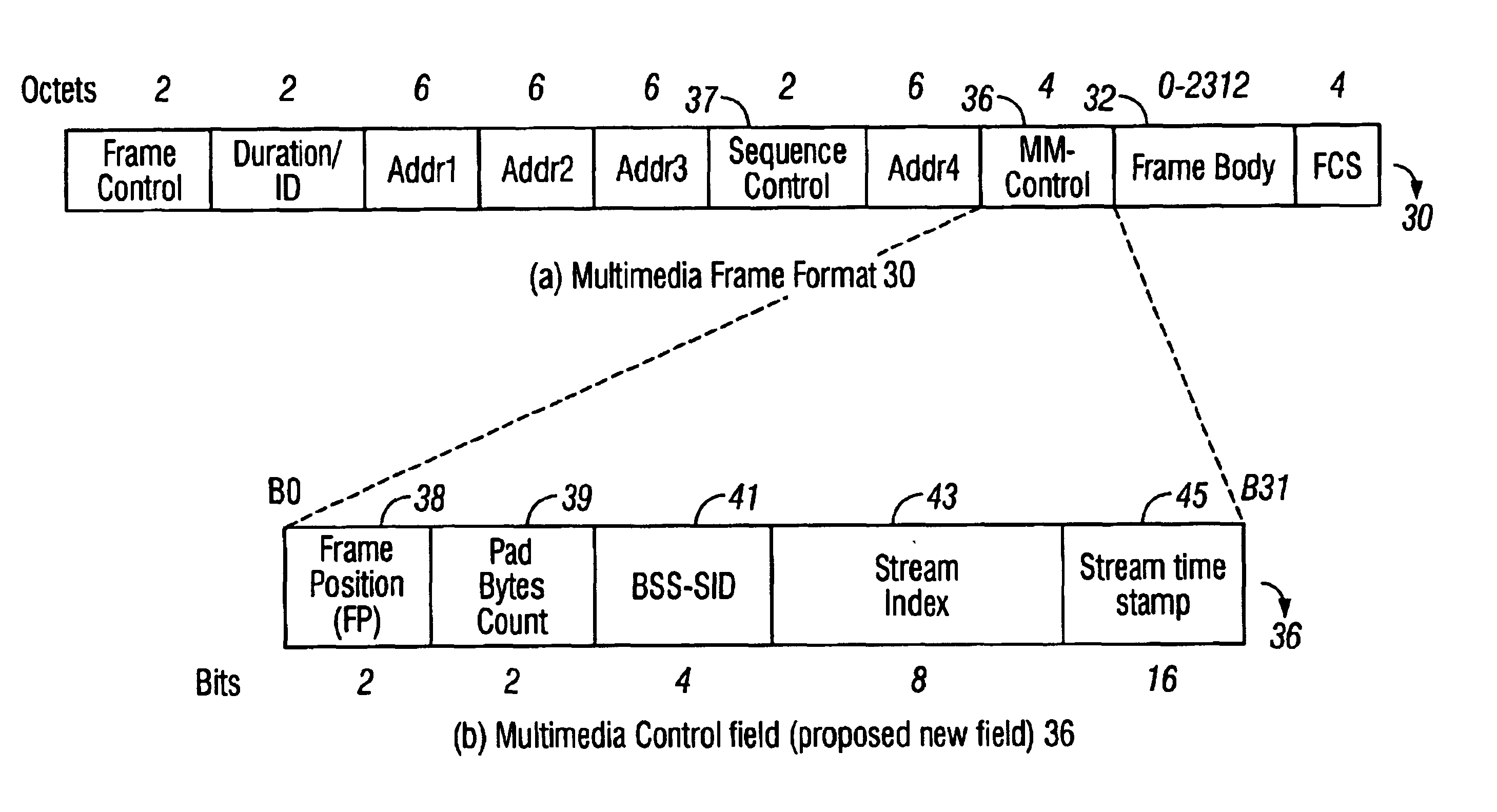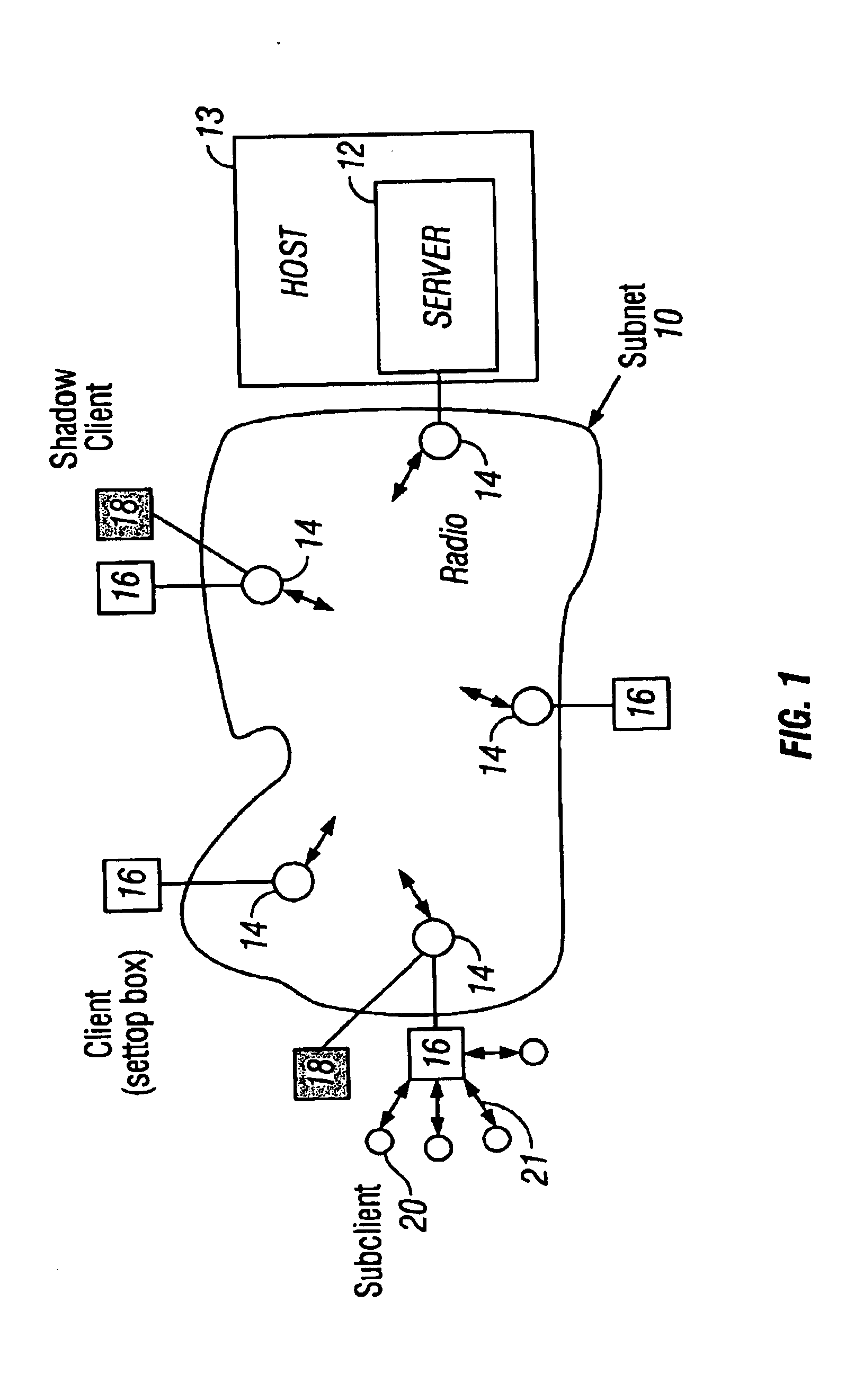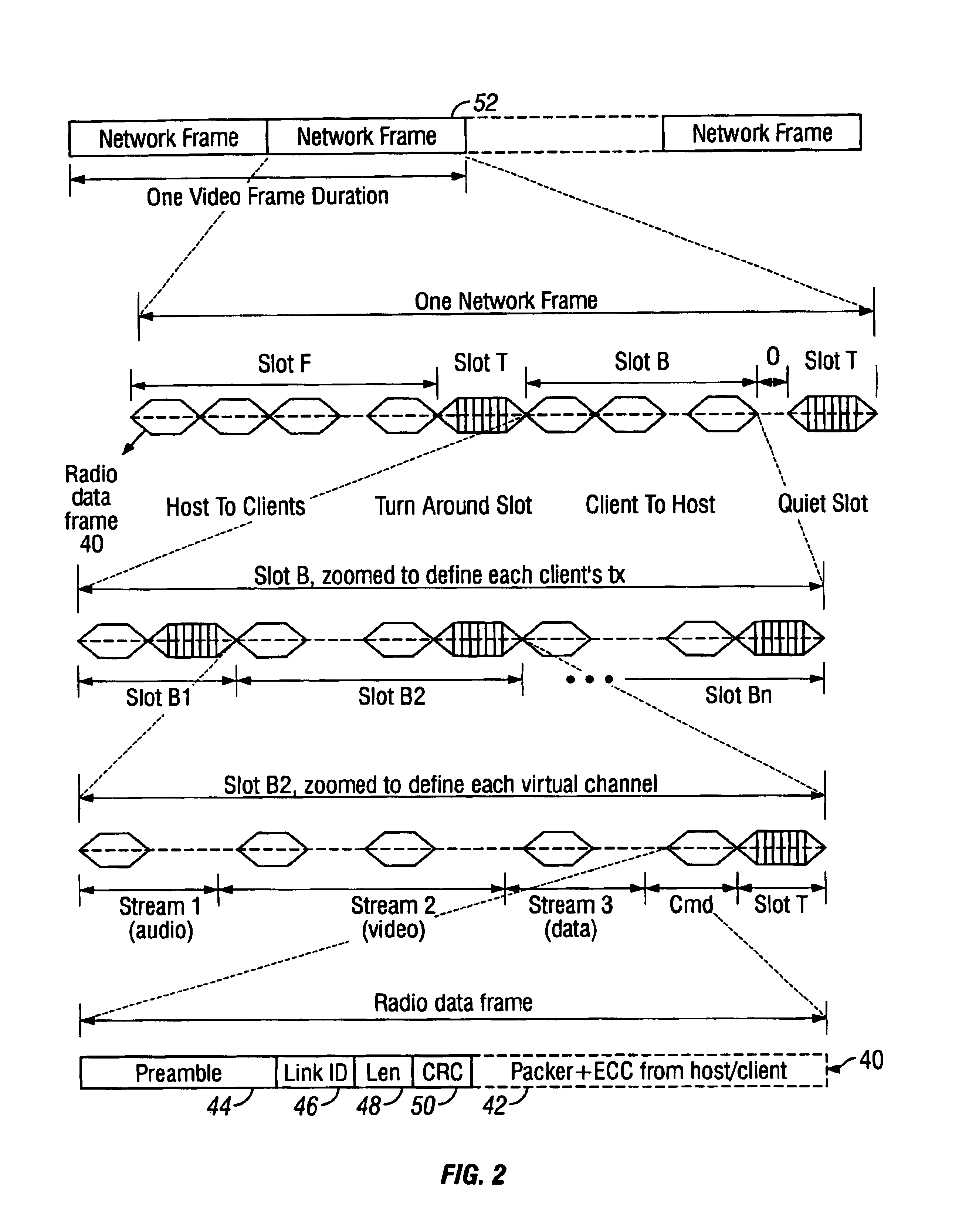Quality of service extensions for multimedia applications in wireless computer networks
a technology of wireless computer network and multimedia application, applied in the field of wireless computer network quality of service extension, can solve the problems of degraded signals on such links, expensive installation of wired links, and inability to meet the needs of users, so as to improve network capacity, simplify operation, and improve service quality
- Summary
- Abstract
- Description
- Claims
- Application Information
AI Technical Summary
Benefits of technology
Problems solved by technology
Method used
Image
Examples
Embodiment Construction
[0093]A computer network communication protocol describing a set of Quality of service related extensions for multimedia applications is disclosed herein. Although discussed with reference to certain illustrated embodiments, upon review of this specification, those of ordinary skill in the art will recognize that the present scheme may find application in a variety of systems. Therefore, in the following description the illustrated embodiments should be regarded as exemplary only and should not be deemed to be limiting in scope.
[0094]A wireless local area network compliant with the 802.11 standard (802.11 WLAN) provides a good support for device connection and authentication, and has concentrated mainly on the transport of asynchronous data over a wireless medium. These features of the 802.11 standard are sufficient for data network applications. On the other hand, the scheme described in the above-cited co-pending application (hereinafter referred to as the “Whitecap” scheme) is de...
PUM
 Login to View More
Login to View More Abstract
Description
Claims
Application Information
 Login to View More
Login to View More - R&D
- Intellectual Property
- Life Sciences
- Materials
- Tech Scout
- Unparalleled Data Quality
- Higher Quality Content
- 60% Fewer Hallucinations
Browse by: Latest US Patents, China's latest patents, Technical Efficacy Thesaurus, Application Domain, Technology Topic, Popular Technical Reports.
© 2025 PatSnap. All rights reserved.Legal|Privacy policy|Modern Slavery Act Transparency Statement|Sitemap|About US| Contact US: help@patsnap.com



